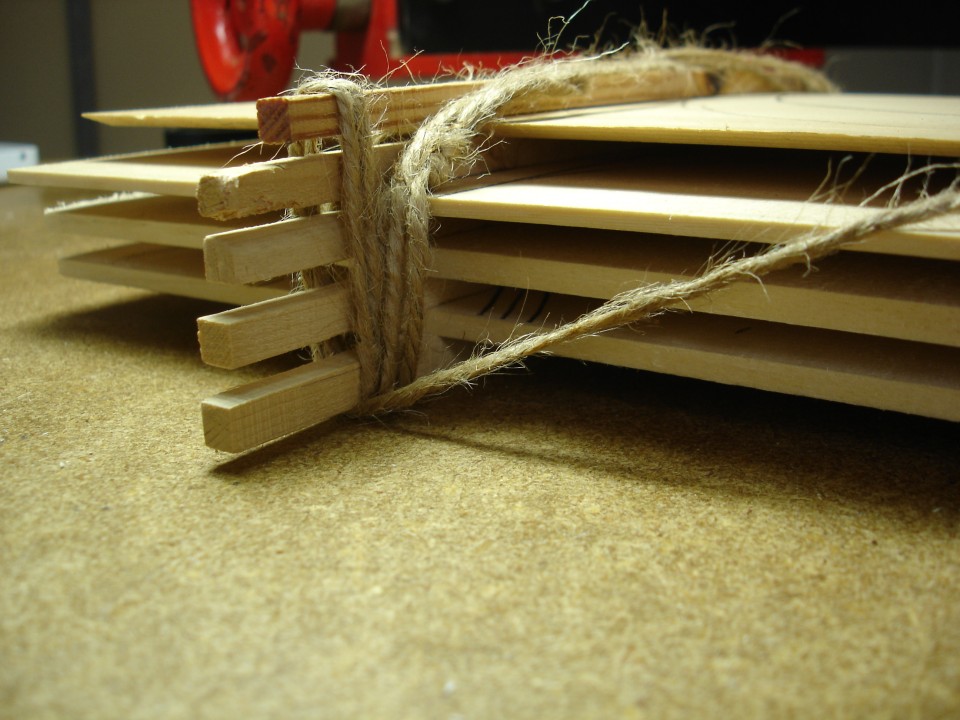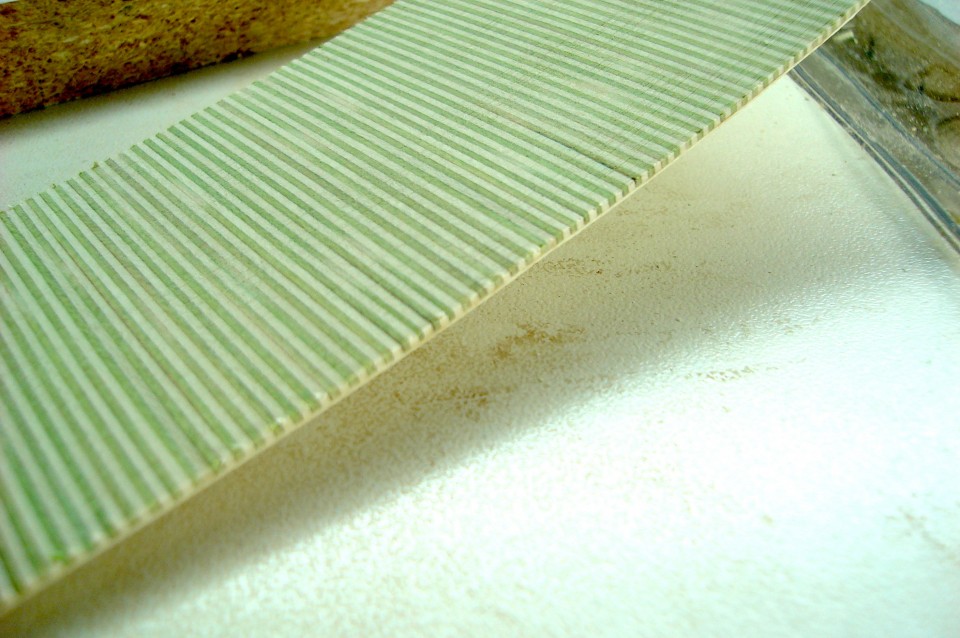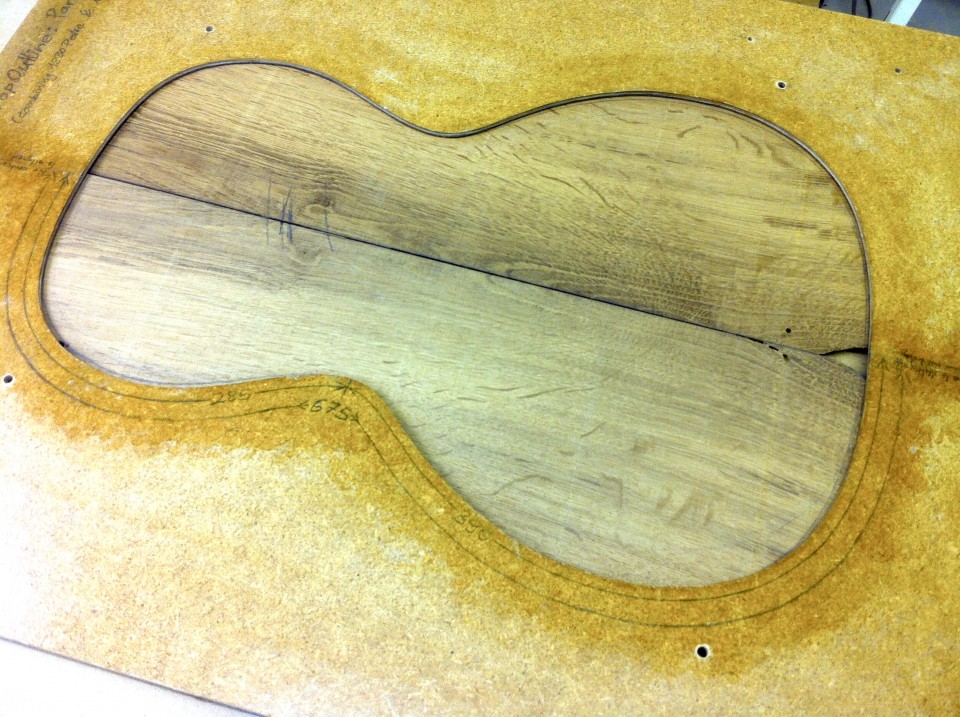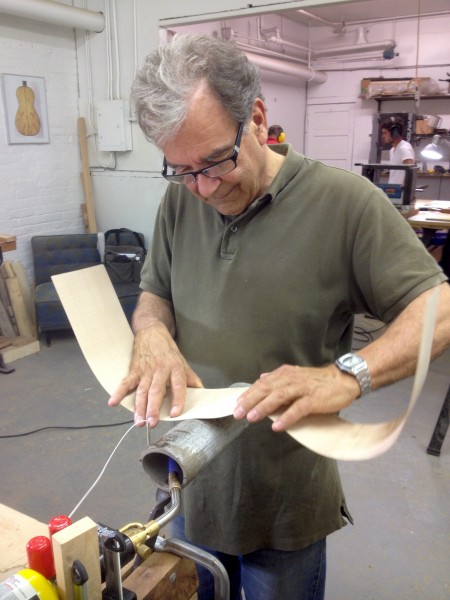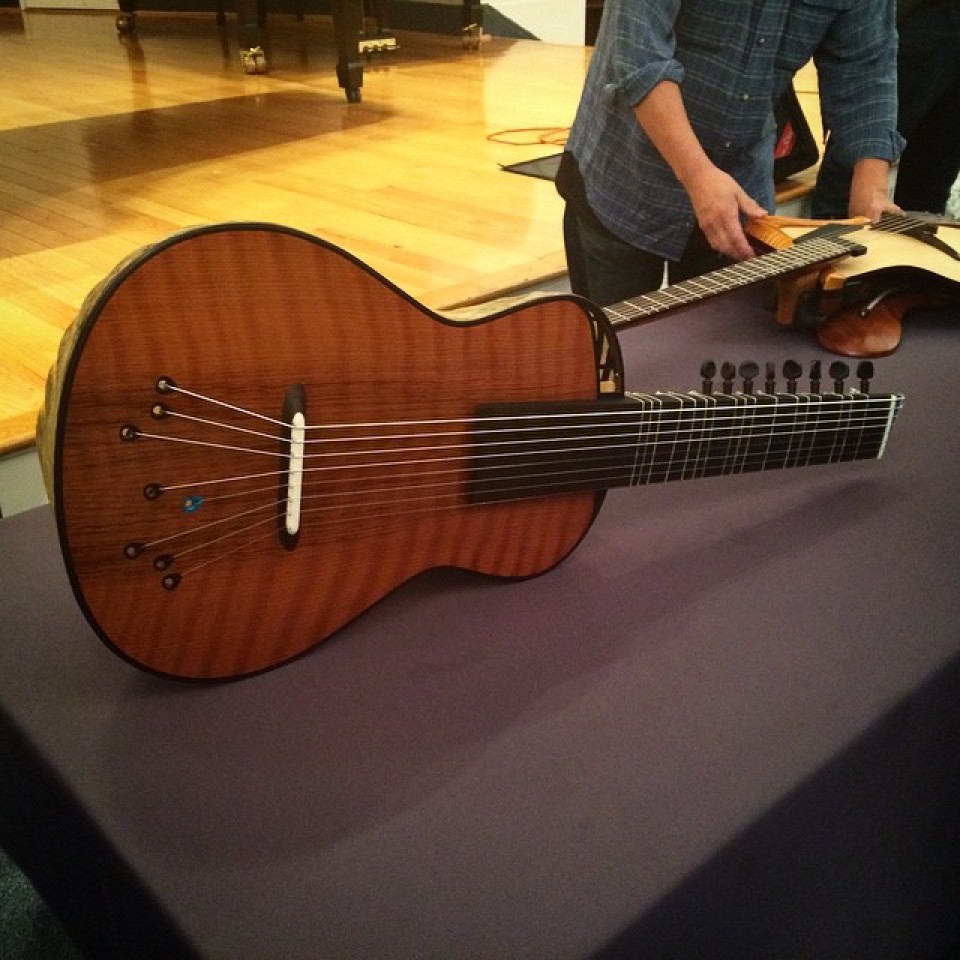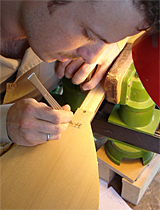
I was born in 1978 in Kassel, Germany and grew up in Berlin. My love for music and fine arts led me to start playing the violin at age six and take up drawing with a passion quite early. In my youth I developed my technique in the three mediums I loved most – spray cans, pencil and airbrush. At age fifteen I was fortunate enough to be mentored in airbrushing technique by Gernot Bubenik, which left a deep impression on my style and technique for years to come.
My father, who was restoring instruments for a museum for many years and repaired instruments in his workshop at home, first exposed me to lutherie. Later I met Izzedin Temo, who plays and makes the Tanbur. These two people have influenced me substantially to become a luthier.
After my apprenticeship in Hallstatt, Austria, I graduated as a “Diplom-Musikinstrumentenbauer” (comparable to a Bachelor of Arts with honours in Musical Instrument Making) and a Master Craftsman title in Plucked Instrument Making at the University of Applied Sciences Markneukirchen, Germany. I have since worked with the luthiers Hagen Schiffler, Andi Neubauer, Anton Domozhyrov and Allan Beardsell.

During the making of an instrument, I select the woods based on many factors such as: growth, origin, visual appearance, acoustic properties, stiffness, smell and sound. Tapping and feeling the wood as well as bending and measuring the processed pieces often reveals properties that are invisible to the eye.
The use of hand tools is the main work method in my shop. Although they might at times be slower than power tools, they provide me with a valuable feedback about the material’s properties as I work with them. As I saw, plane, scrape and sand the materials, the visceral knowledge of the components influences my decisions on their final thickness and respectively shapes their future sound properties.
I decide upon other important visual aspects such as inlays before and during the construction of an instrument. Aesthetic decisions, which rely heavily on tradition and experience, are made throughout the building process and permit a continuous dialogue between the work piece and myself.
In 2007 I moved to Winnipeg, Canada, and after my studies have led me into the realm of experimental instrument making (which has been the topic of my thesis in 2008), I became interested in historical instrument making. Recently I have been very fortunate to have been granted access to study some of the guitars of Antonio de Torres.
For those who have an interest in highly innovative modern instruments or very traditional historical instruments (I have a passion for these opposing fields), keep an eye out for the future creations from my workshop.
If you want to find out more about the instruments I make, please visit the Official Website of Florian Vorreiter Lutherie.

